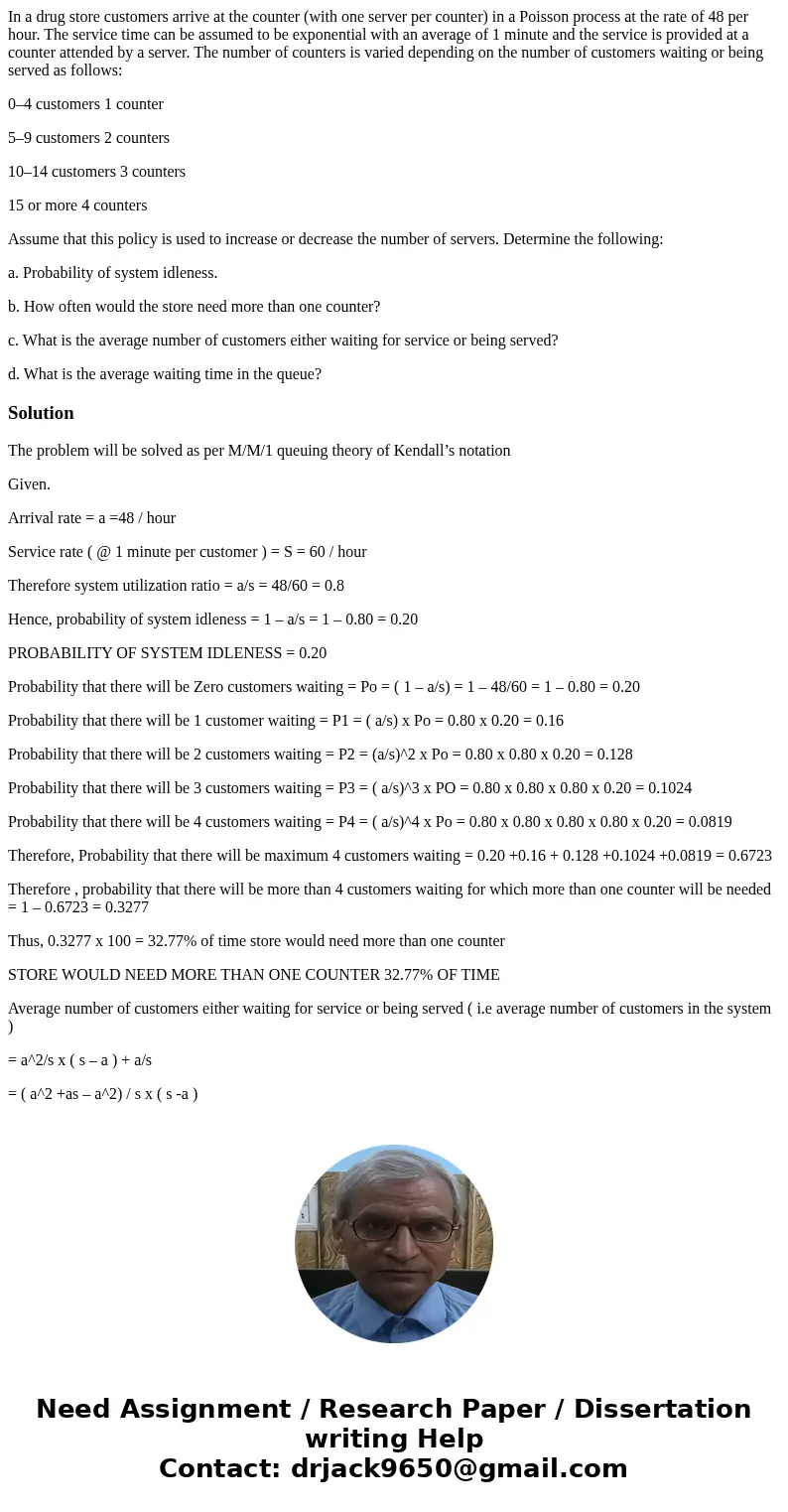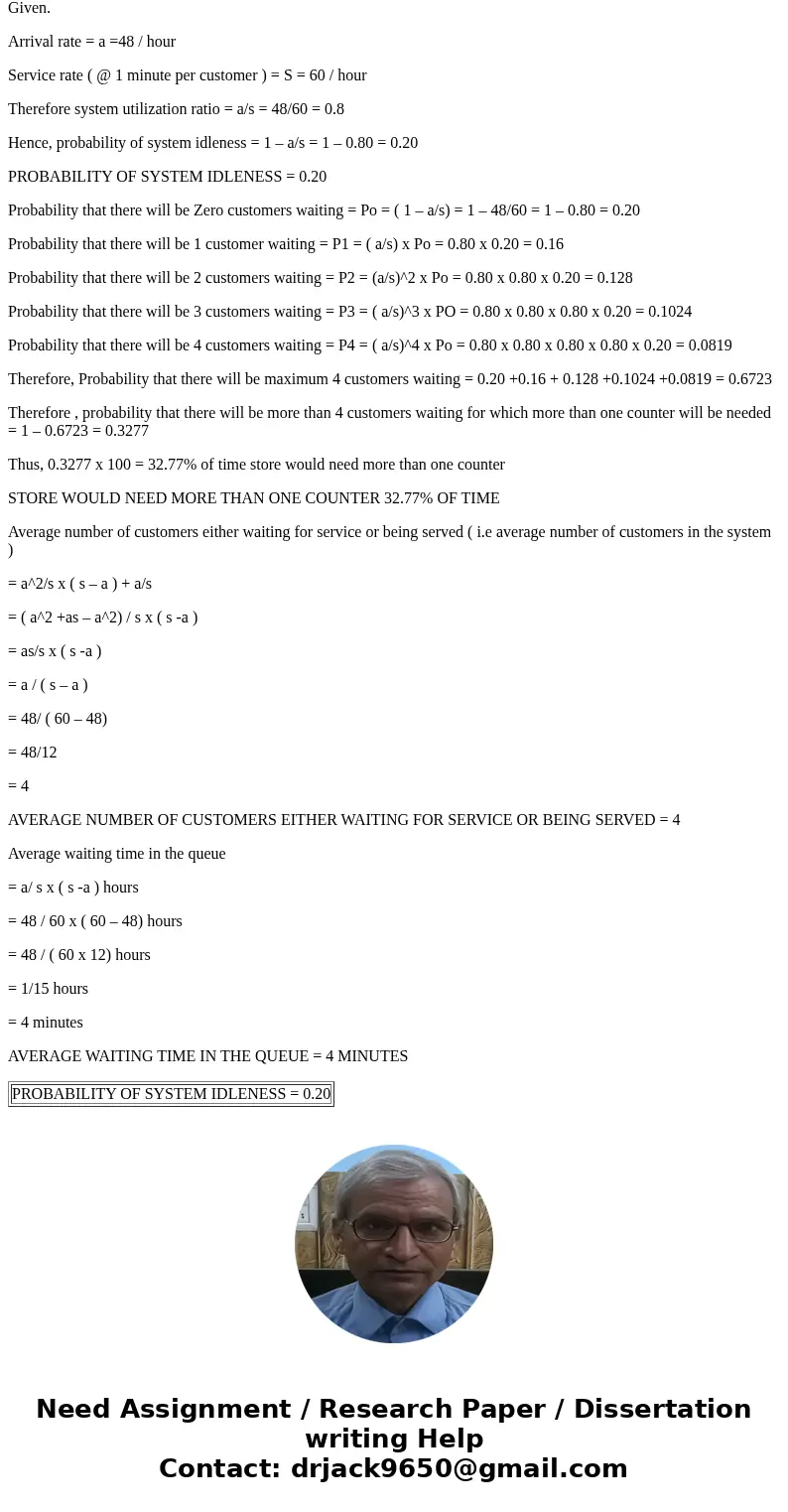In a drug store customers arrive at the counter with one ser
In a drug store customers arrive at the counter (with one server per counter) in a Poisson process at the rate of 48 per hour. The service time can be assumed to be exponential with an average of 1 minute and the service is provided at a counter attended by a server. The number of counters is varied depending on the number of customers waiting or being served as follows:
0–4 customers 1 counter
5–9 customers 2 counters
10–14 customers 3 counters
15 or more 4 counters
Assume that this policy is used to increase or decrease the number of servers. Determine the following:
a. Probability of system idleness.
b. How often would the store need more than one counter?
c. What is the average number of customers either waiting for service or being served?
d. What is the average waiting time in the queue?
Solution
The problem will be solved as per M/M/1 queuing theory of Kendall’s notation
Given.
Arrival rate = a =48 / hour
Service rate ( @ 1 minute per customer ) = S = 60 / hour
Therefore system utilization ratio = a/s = 48/60 = 0.8
Hence, probability of system idleness = 1 – a/s = 1 – 0.80 = 0.20
PROBABILITY OF SYSTEM IDLENESS = 0.20
Probability that there will be Zero customers waiting = Po = ( 1 – a/s) = 1 – 48/60 = 1 – 0.80 = 0.20
Probability that there will be 1 customer waiting = P1 = ( a/s) x Po = 0.80 x 0.20 = 0.16
Probability that there will be 2 customers waiting = P2 = (a/s)^2 x Po = 0.80 x 0.80 x 0.20 = 0.128
Probability that there will be 3 customers waiting = P3 = ( a/s)^3 x PO = 0.80 x 0.80 x 0.80 x 0.20 = 0.1024
Probability that there will be 4 customers waiting = P4 = ( a/s)^4 x Po = 0.80 x 0.80 x 0.80 x 0.80 x 0.20 = 0.0819
Therefore, Probability that there will be maximum 4 customers waiting = 0.20 +0.16 + 0.128 +0.1024 +0.0819 = 0.6723
Therefore , probability that there will be more than 4 customers waiting for which more than one counter will be needed = 1 – 0.6723 = 0.3277
Thus, 0.3277 x 100 = 32.77% of time store would need more than one counter
STORE WOULD NEED MORE THAN ONE COUNTER 32.77% OF TIME
Average number of customers either waiting for service or being served ( i.e average number of customers in the system )
= a^2/s x ( s – a ) + a/s
= ( a^2 +as – a^2) / s x ( s -a )
= as/s x ( s -a )
= a / ( s – a )
= 48/ ( 60 – 48)
= 48/12
= 4
AVERAGE NUMBER OF CUSTOMERS EITHER WAITING FOR SERVICE OR BEING SERVED = 4
Average waiting time in the queue
= a/ s x ( s -a ) hours
= 48 / 60 x ( 60 – 48) hours
= 48 / ( 60 x 12) hours
= 1/15 hours
= 4 minutes
AVERAGE WAITING TIME IN THE QUEUE = 4 MINUTES
| PROBABILITY OF SYSTEM IDLENESS = 0.20 |


 Homework Sourse
Homework Sourse